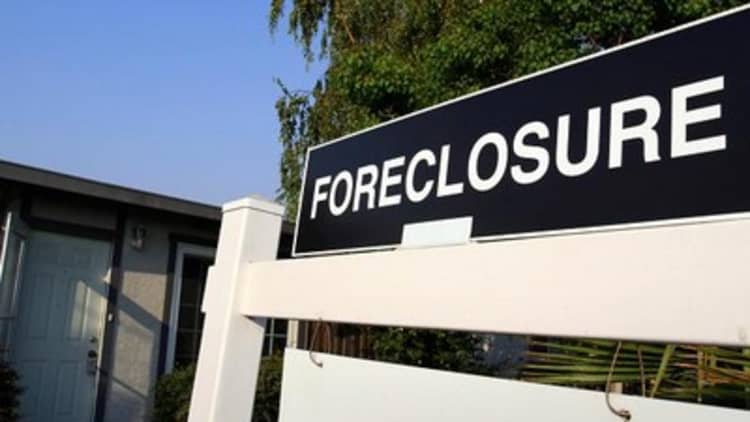
They are a blight on neighborhoods and bank balance sheets: homes in the foreclosure process, some in limbo for several years, their former owners gone but the home still not repossessed by the bank. They were dubbed "zombies" because their empty state was seen as a danger to both the neighborhood and the overall health of the housing market.
Banks had let these homes sit because they were of so little value and because of endless foreclosure processing issues. Most are in disrepair, some occupied by squatters or drug dealers. But now, things are changing. The legal process has been largely streamlined, and as home prices rise nationwide, so too do the values of these zombie homes; banks are now pushing them through the foreclosure process and out to auction far more quickly.
There are now about 127,000 zombie foreclosures, down 10 percent from a year ago, according to RealtyTrac, a foreclosure listing and analytics company. That means that one in five homes that are in the foreclosure process, that is the legal process has started but the bank has not yet repossessed the home, are vacant.
Read MoreWeekly mortgage applications jump as rates surge
Despite the overall drop, zombie foreclosures are rising in some of the highest-priced markets, such as Los Angeles, New York, Boston and Houston. That is because banks are moving the process more quickly in order to take advantage of rising home prices; so former owners are finally moving out. When the house is vacant, it becomes a zombie.
"They've been able to stay in that home and maybe fight foreclosure for three, four, five years, and now finally the bank is coming back with all their ducks in a row, the proper documentation, and the homeowner is seeing the writing on the wall that I'm going to have to leave and move on with my life," said RealtyTrac Vice President Daren Blomquist.
In just the last two months, banks have really ramped up on repossessing homes. These so-called REOs (bank repossessions) are now at a 17-month high. This, as the value of these former zombies rises amid strong housing demand and tight housing supply.
"The average price of a zombie foreclosure nationwide was $195,000, so we're not talking about just $20,000 or $30,000 properties here," added Blomquist.
That is good news to neighbors, like Ariel Seeley, who recently moved into a transitional Washington, D.C., neighborhood with her young family.
"For us as neighbors, we'd love to have people move in and occupy the houses," Seeley said. "It makes it seem a little unsafe or dreary when you're walking by and you see vacant signs, and you don't know what's going on with the houses."
Read MoreEfforts to help homeowners fail their troubled mortgages
The phenomenon, however, like all real estate, is very local. While some areas are seeing the zombies annihilated—moved to auction and final sale—quickly, others are not.
"In Chicago, you've got a real variation within the city among markets. You see stronger neighborhoods where prices have gone up steadily, and those areas are not where the zombie foreclosures are located," said Geoff Smith, executive director of the Institute for Housing Studies at DePaul University. "There are neighborhoods that continue to struggle, and those price levels are still well below where they were at the peak or even in 2000."
Banks are honing in on foreclosures in stronger local markets, but there is a cost to completing a foreclosure and a cost to selling the property, and in some areas there is not necessarily a market that would bear these costs. In those cases, the vacant homes sit longer and continue to be a blight on the neighborhood.
—CNBC producer Stephanie Dhue contributed to this report.


